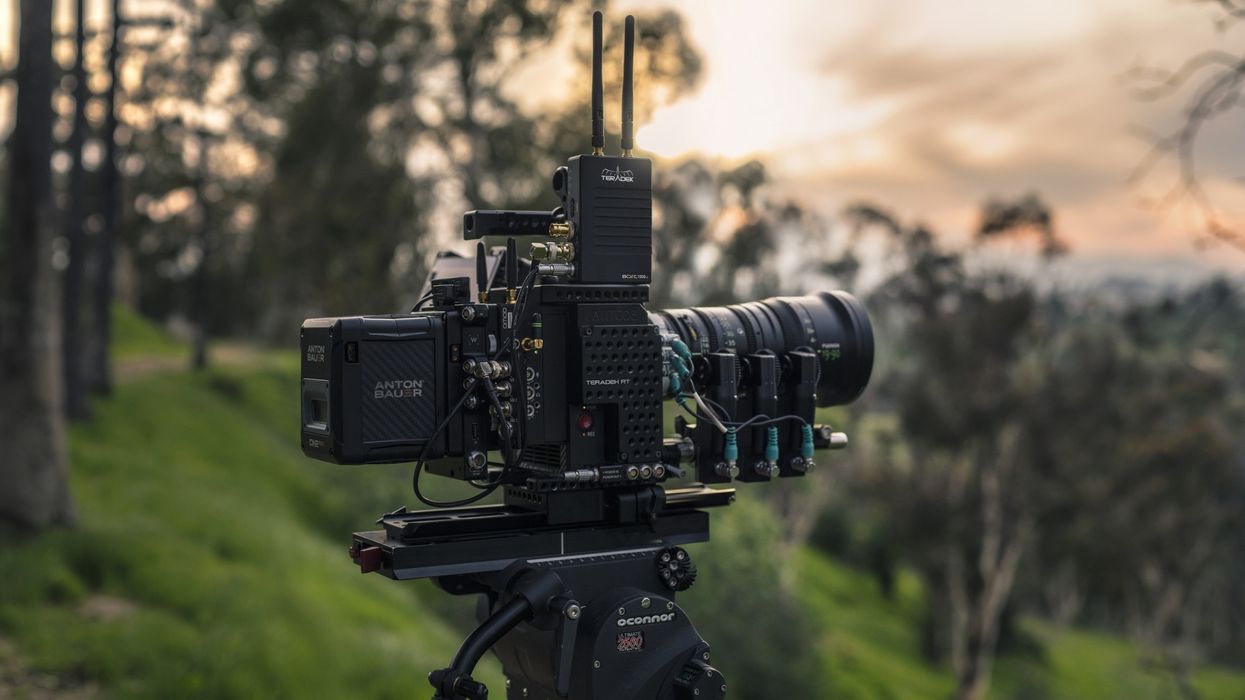Teradek Group Buy Update, And Why 3D Luts in Your Wireless Are Worth It
Tech Specs:

IMPORTANT UPDATE: Due to price increases that take effect on January 1st, we've moved the end date of the Teradek Bolt Group Buy forward to December 27th at 11:59pm EST. This will give all group buy participants time to complete their purchase at the current pricing. Get your orders in now to take advantage of this exclusive pricing.
We also thought it might be a good time to talk about one of the big features separating the XT and LT units. That feature, of course, is the ability to load a 3D LUT in the XT units and affect the appearance of your image in realtime as part of your imaging pipeline.
If you don't remember what LUTs are, they stand for Look-Up Table, and they are just a small file that allows a system to change the appearance of an image in a really simple way. You can make a shot darker, or lighter, or warmer, or cooler. You can apply a "look" to your image. You can transform your footage from Log to Linear, or back to Log, or make it "pop."
LUTs have a lot of limitations (you don't see them much in post anymore since out of gamut issues and bit depth dithering make them less than ideal when you can avoid them), but they are a huge bonus on set. The big reason is "client preview." While you are a savvy filmmaker and might not mind monitoring your image in flat log mode because you just need to see focus and framing, most clients aren't comfortable with that. They want to see a glossy, beautiful image on set. It convinces them to trust you with the project.
That is where a LUT comes in. If your camera doesn't have a LUT capability built-in (and many smaller cameras don't) and your monitor doesn't (as many don't) you can load the LUT in your Bolt 500 XT to change the image before it wirelessly makes it to the client monitor.
Even if you currently have a LUT capable camera and monitor, it's still super useful to have LUT ability in your wireless video for all those times when you do other jobs with new gear. Or if you want to do something special with the wireless LUT (maybe it goes to a client with a heavy grade applied with the LUT), while you monitor locally with a lighter LUT that just transform Log to Linear. The possibilities are endless.
If you are thinking about bumping from the LT to the XT, and wondering if it's worth it, just think about all the times clients have looked at the image on set and had questions about what it would finally look like and you had to explain it wasn't fully graded yet. If that doesn't happen to you, you can probably be very happy with the LT, but if you run into that all the time, it's worth considering bumping up to the XT.
Here is the group buy form:
- 3D LUTs - apply looks directly to the video feed. Upload your own LUTs or select from presets native in the Bolt.
- Cross Conversion - Bolt XT automatically converts resolution, frame rate and input/output interfaces for seamless transport to external monitors.
- 5GHz Spectrum Analyzer - scans the surrounding area for radio frequency (RF) congestion. This helps to determine which frequency to set your devices to operate on for best transmission results.
- Channel Selection - manually choose which 5Ghz frequency channel to operate on.
- Dual Inputs - XT transmitters feature HDMI & 3G-SDI inputs with a 3G-SDI looping output.
- Dual SDI Outputs - XT receivers feature HDMI & 2x SDI outputs.
- NATO rail - 1000 XT and 3000 XT receivers have built-in NATO rails for easy mounting.
- ARRI ⅜ Pin-Loc - built-in on all XT (and LT) transmitters.
- Additional mounting options - Gold & V-mount battery plates can be added onto receivers.
- Sony L-series and Canon LP-E6 plates can also be added to either the RX or TX.
- Pass-Through Power - all battery plates feature pass-through power via a second plate (Gold / V mount on 1000 XT and 3000 XT receivers), P-Tap (Gold and V mount plates) or barrel connector (Sony and Canon plates).














